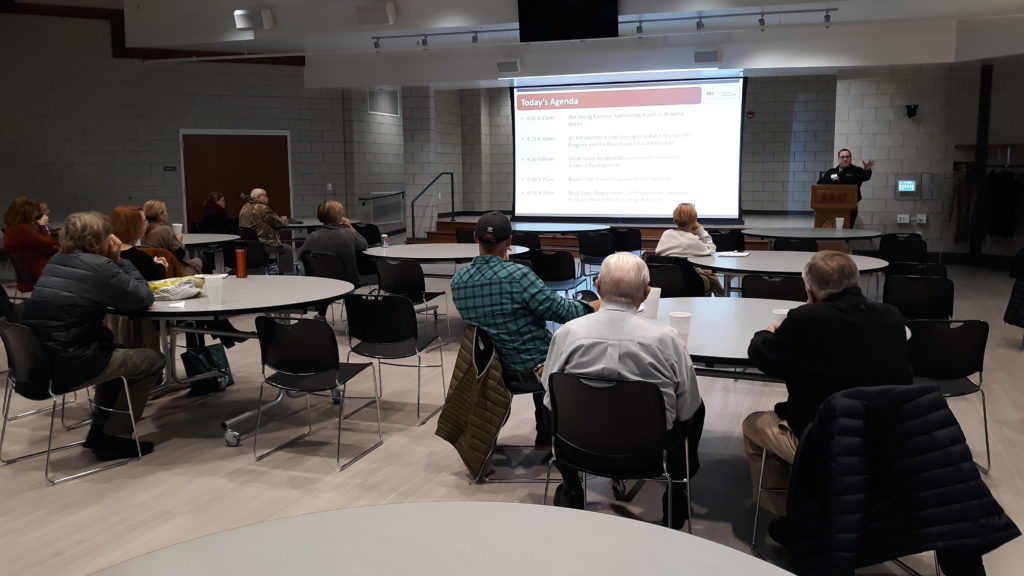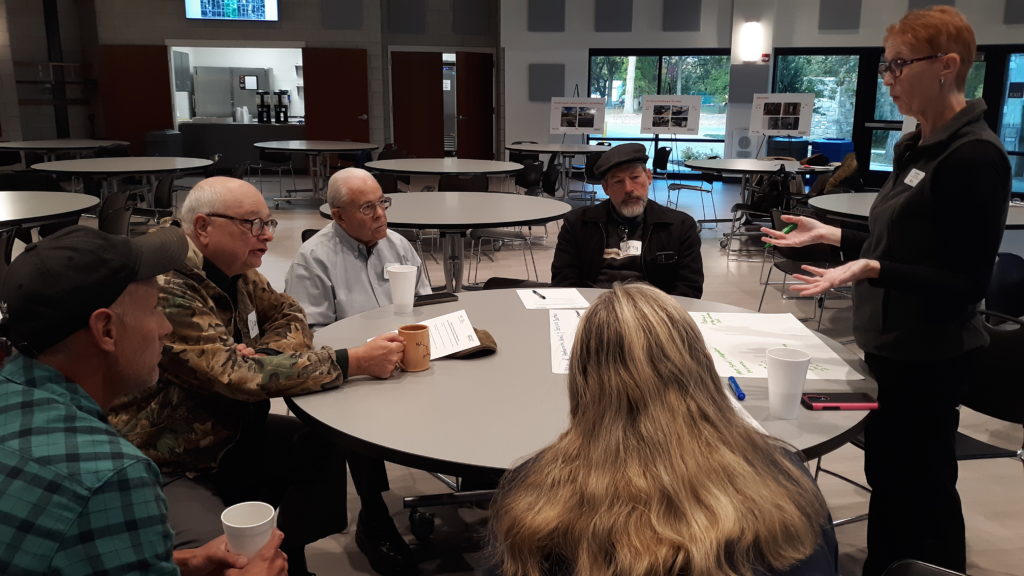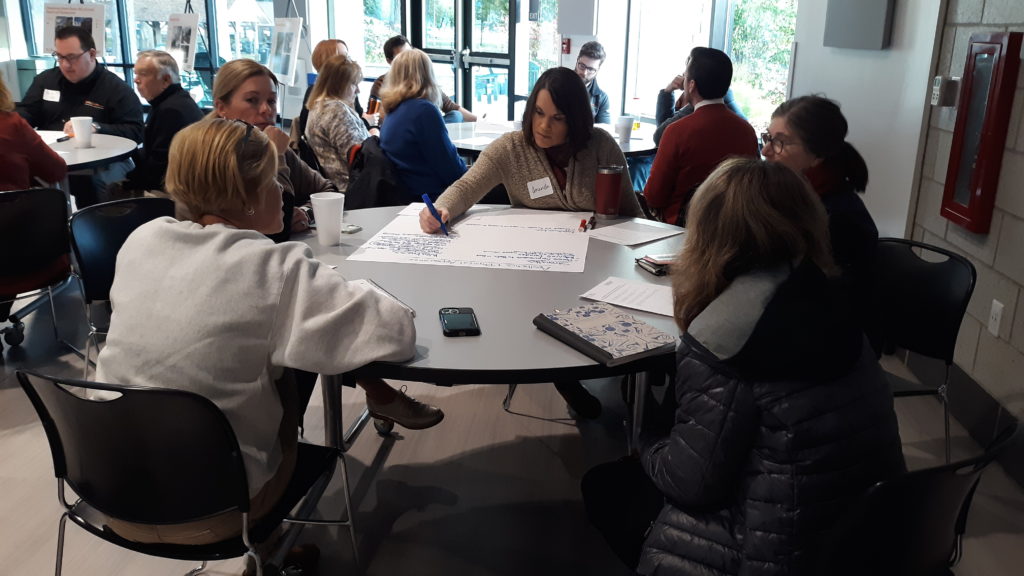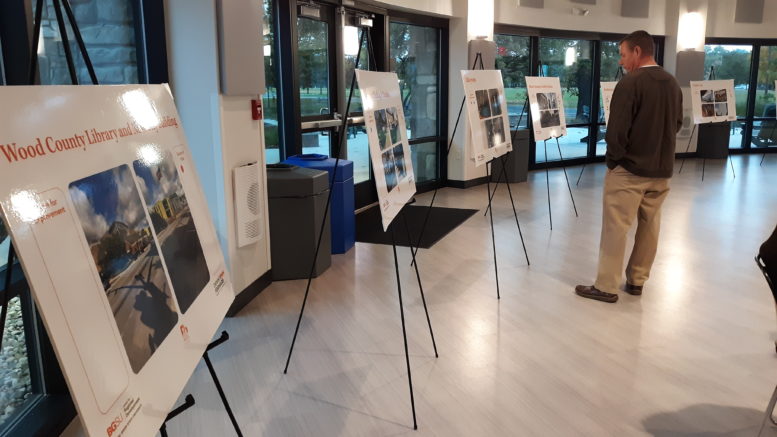By JAN LARSON McLAUGHLIN
BG Independent News
Bowling Green residents got their first chance Tuesday morning to weigh in on the Downtown Forward project – tossing about ideas to improve the downtown’s appearance, accessibility, events, retail and residential opportunities.
Citizens will have another opportunity to pitch their ideas during the next community feedback session on Thursday from 6 to 7:30 p.m., in the Veterans Building in City Park.
City officials want to know what citizens want in their downtown.

The feedback sessions are part of the city’s “Downtown Forward” project, with a focus on respecting the city’s heritage and reimagining its future. The ultimate goal is to attract and retain people in Bowling Green.
“Everything is on the table,” Mayor Mike Aspacher said as he announced the project last month. The project could encompass everything from physical improvements to changes in downtown marketing. “I really want the group to think broadly.”
On Tuesday, those attending were given a couple stickers to place on boards, indicating whether a particular downtown feature is a source of pride or has room for improvement.
Among the biggest vote getters for “pride” included downtown festivals, historical facades, and the mix of local retail and restaurants.
Top in the “needs improvement” were downtown housing, Wooster Green, parking lots and garbage corrals behind businesses.
The 35 or so people at the session divided into small groups to tackle specific issues like accessibility, walk and bikeability, aesthetics, downtown residential properties, events, the mix of residential and retail services, and the connection to the BGSU campus.
A common theme arose – the need for planning.

Some of the top ideas from the small groups included:
- Traffic calming measures.
- More downtown crosswalks.
- Bike infrastructure beyond sharrows.
- Downtown restrooms.
- Better ADA accommodations by businesses.
- Need a master plan for murals popping up.
- Backsides of businesses need to be improved.
- Changes to dumpster corrals, which create bad impressions.
- Consistency in alleyway plans.
- Better upkeep, like removing vomit from sidewalks after weekends.
- Focus on historic preservation.
- Rental inspections.
- Expanding downtown housing stock.
- Create recycling options downtown.
- Explore a small grocery store for residents of the area.
- Need for more diverse entertainment or leisure activities – besides bars.
- Do more with Wooster Green.
- Create a centralized events website that would collaborate with BGSU events.
- Work to change perception of a parking problem.
- Study the possibility of a parking garage.
- Improve downtown signage.
- Create entrepreneur incubator opportunities.
- Encourage investment in buildings.
Bowling Green’s downtown is the heart of the community, Aspacher stressed. A place for business, a place to gather as a community, a place that truly reflects Bowling Green.
“This project is worthy of our time, it is worthy of investment,” he said.

The Downtown Forward project is beginning by identifying community priorities for the downtown, then developing detailed plans for implementation.
Bowling Green was selected to participate in the Reimagining Rural Regions (R3) program with BGSU’s Center for Regional Development. Graduate and undergraduate students have been tasked with conducting community surveys and public forums to get input on the downtown.
The BGSU R3 program, launched in 2021, is an economic and workforce development- centered placemaking initiative that helps communities identify, enhance and build community assets to aid in talent attraction and retention, according to Russell Mills, senior director for the BGSU Center for Regional Development.

